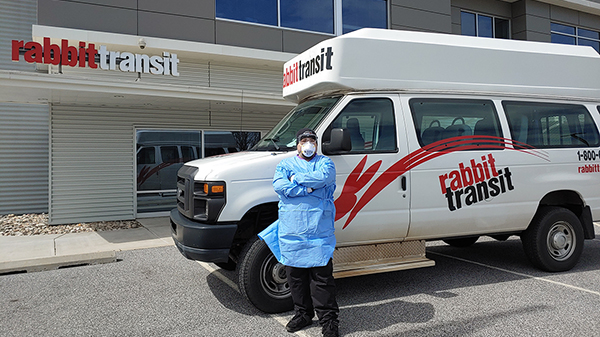AARP Hearing Center
Public Transit as a Pandemic Lifeline
By Jana Lynott, Mouchka Heller , April 23, 2020 07:38 AM

In the face of the outbreak, AARP is providing information and resources to help older people and those caring for them protect themselves from the virus and prevent it from spreading to others. You can find AARP's coronavirus resources at www.aarp.org/coronavirus.
En español | Across much of the world, life as we know it has come to a grinding halt. Heeding governments’ warnings, people are staying home, away from crowds and potentially infectious environments. The abandonment of shared settings includes public buses and trains.
Demand for public transportation has plummeted during the pandemic—by as much as 75-85 percent in cities such as Washington, Copenhagen, and Buenos Aires. The Washington Metropolitan Area Transit Authority projects losses of as much as $52 million per month due to COVID-19-related lifestyle changes, waived bus fares, and the economic downturn.
Yet in spite of lost revenues and even COVID-19 dangers presented to their workforce, transit providers, commonly viewed as static and inflexible, have responded to these extraordinary circumstances to serve their communities.
The Need
Many older adults, in particular, have major challenges. They have been urged to stay home because the risk of severe illness increases with age. These individuals often do not drive and may have limited financial resources. Yet, they still need food and possibly medication, and they may need to make routine yet lifesaving trips to, say, dialysis appointments.
Older adults are not alone in their reliance on public transit systems. Lower income households may need to reach school lunch programs and supermarkets. Homeless individuals may need to access test sites and quarantine locations so they can keep themselves and their neighborhoods safe.
It is in these moments, particularly as many human service organizations have shuttered, that public transportation shines as the essential service it is.
The Response
Public transportation providers have adjusted the way they do business, even taking on new roles. Charlevoix County Transit (CCT) in northern Michigan is just one of many rural transit providers to begin home delivery of groceries, food pantry packages, meals provided by senior centers, and prescription medications to older adults and at-risk individuals who shouldn’t leave the safety of their homes. The transit agency also provides transportation to residents who need to get to a school food program or one of the local restaurants offering reduced or free meals to students. On top of those extras, CCT has extended free fares to all riders and waived eligibility requirements for medical transportation service.
Another example is rabbittransit, a regional public transportation authority operating service in 10 counties in predominantly rural central and southcentral Pennsylvania. It has responded to the pandemic by partnering with the local health system to provide homeless individuals and families transportation to testing facilities and safe quarantine locations.
Like CCT, many US transit systems have waived fares and instituted rear door loading to better distance drivers from passengers. This is a prudent action but one that will have lasting repercussions for transit budgets. Rabbittransit, for instance, is losing $34,000 each week.
The recent CARES Act provides an unprecedented $25 billion lifeline back to hemorrhaging transit budgets and offers transit operators increased spending flexibility so that they are able to respond nimbly.
In Harm’s Way
Beyond financial loss for transit agencies, their drivers are taking personal risk. Yet transportation is a necessity for all, and providers have been there for them. MOVIA, the regional transportation authority for Copenhagen, and coordinator of innovative demand responsive flex services, has dedicated one vehicle to transport COVID-19 patients from one hospital ward to the next. MOVIA has also temporarily forgone its world-renowned rideshare services, limiting each vehicle to one passenger.
Despite prudent measures to physically distance drivers and passengers, public transit operators and delivery professionals have taken a position on the front lines. They should be acknowledged, alongside the service of healthcare and food workers, as serving in that role.
Public transportation’s adaptation during this time of crisis demonstrates the capacity to change even our most traditional forms of mobility in order to meet the needs of people, ensure the safe movement of goods, and make the world more resilient. Let’s not forget the lessons of this moment as we ready our future transportation system to respond to other challenges. Those no doubt start with the unfolding worldwide economic recession, and will continue from there, even to a looming climate threat. An equally deft response to such challenges is imperative.

































































